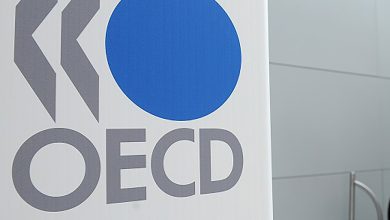How is China boosting the private sector's confidence?


<img src='https://news.cgtn.com/news/2024-07-15/How-is-China-boosting-the-private-sector-s-confidence–1vfJDn5jvTq/img/70332cfc91204e3ba49d5757fad28843/70332cfc91204e3ba49d5757fad28843.jpeg' alt='Tourists enjoy themselves in Qiaotou Town, Shizhu Tujia Autonomous County, Chongqing, southwest China, June 30, 2024. /CFP'
Editor’s note: Reform and opening-up policies hold the key to the destiny of contemporary China and are a crucial move that determines the success of Chinese modernization. CGTN rolls out a series of special reports to show how China is comprehensively deepening reform and opening wider to the world.
Contributing about 60 percent of China’s GDP, the private sector is a pivotal part of China’s economy.
China’s GDP expanded 5 percent in the first half of 2024, according to latest data from the National Bureau of Statistics. The country’s total import and export of goods have grown rapidly, and its trade structure has continued to improve. From January to June, imports and exports of private enterprises increased by 11.2 percent compared to the same period last year, accounting for 55 percent of the country’s total.
It’s not surprising that China’s private sector is gaining momentum recently, as an array of policies and measures to promote the high-quality development of the private economy have been introduced since 2023.
After a general guideline was released last July, the National Development and Reform Commission (NDRC), China’s top economic planner, and several other government agencies unveiled a series of detailed measures to boost the private sector’s confidence.
To tackle prominent problems facing private enterprises, the measures included fair market access, stronger financial support and legal guarantees, and better government services.
China has set up a bureau specializing in promoting the private economy’s development. Operating under the NDRC, it was established to strengthen policy coordination in relevant areas and ensure that related measures are implemented as early as possible and achieve tangible results.
The bureau is responsible for establishing a mechanism for regular communication with private enterprises. It will also coordinate efforts to solve major problems concerning the development of the private economy, and work toward enhancing its international competitiveness.
<img src='https://news.cgtn.com/news/2024-07-15/How-is-China-boosting-the-private-sector-s-confidence–1vfJDn5jvTq/img/6702317d116c4f40b17dbcf58d2b9830/6702317d116c4f40b17dbcf58d2b9830.jpeg' alt='A representative of private enterprises speaks at a meeting on high-quality development of private economy in Chengdu, Sichuan Province, southwest China, May 7, 2024. /CFP'
Over the past four decades of reform and opening up, China has designed a system of major policies, laws and regulations to encourage, support and expand the private economy. To build a high-level socialist market economy, China will unswervingly consolidate and develop the public sector and encourage, support and guide the development of the non-public sector.
Currently, the private sector contributes more than half of China’s tax revenue, 70 percent of its technological innovation, and accounts for 80 percent of its urban employment.
By the end of May, the number of private business entities in China had reached 180.45 million, accounting for 96.4 percent of the country’s total business entities, according to the State Administration for Market Regulation.
The proportion of private economy in China’s economy has steadily increased, making it an indispensable pillar for the country’s high-quality development.
In China, more than 90 percent of private companies are small- and medium-sized enterprises (SMEs). To strengthen financial support for the private sector, the NDRC has given full play to the pilot investment-lending linkage mechanism established with seven banks since July 2023.
By the end of the first quarter in 2024, outstanding inclusive loans granted to SMEs reached 31.4 trillion yuan (about $4.3 trillion), up 21.1 percent year on year, data from the National Financial Regulatory Administration showed.





